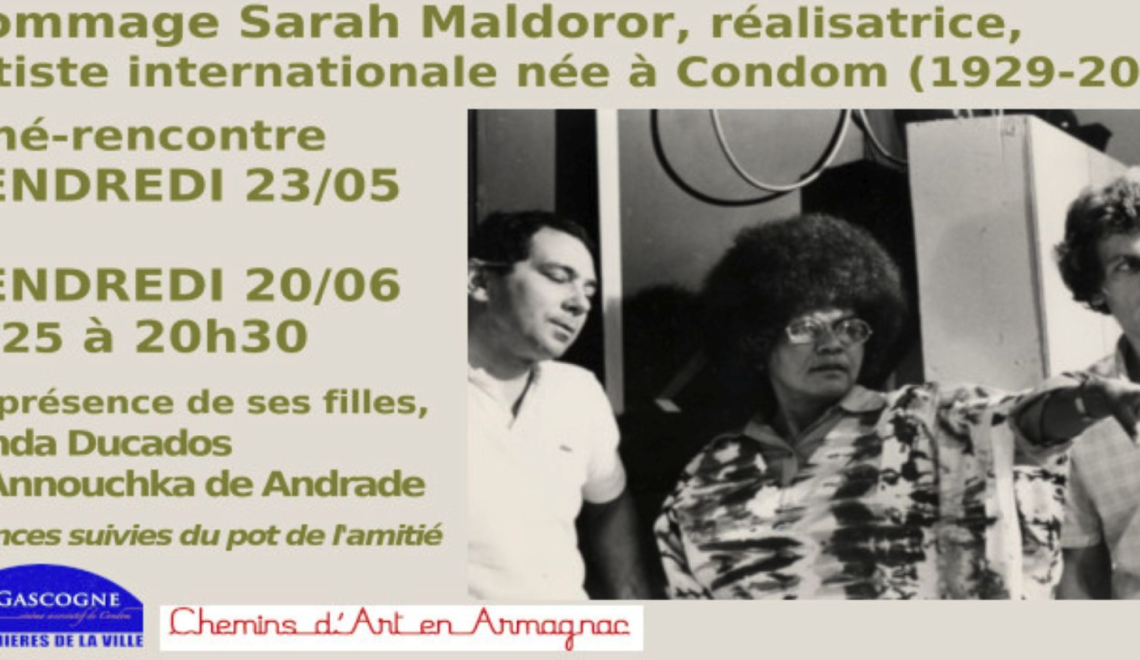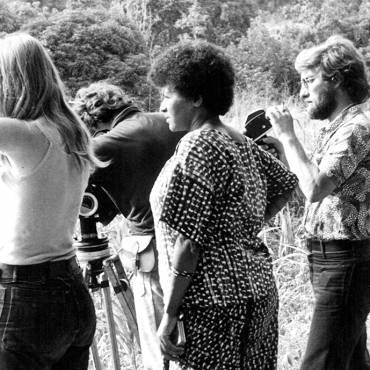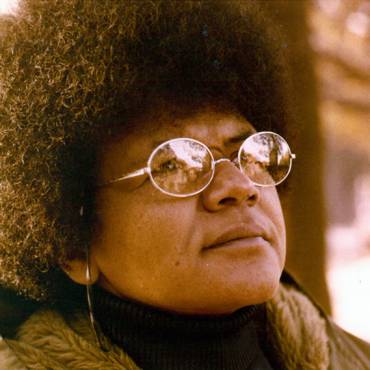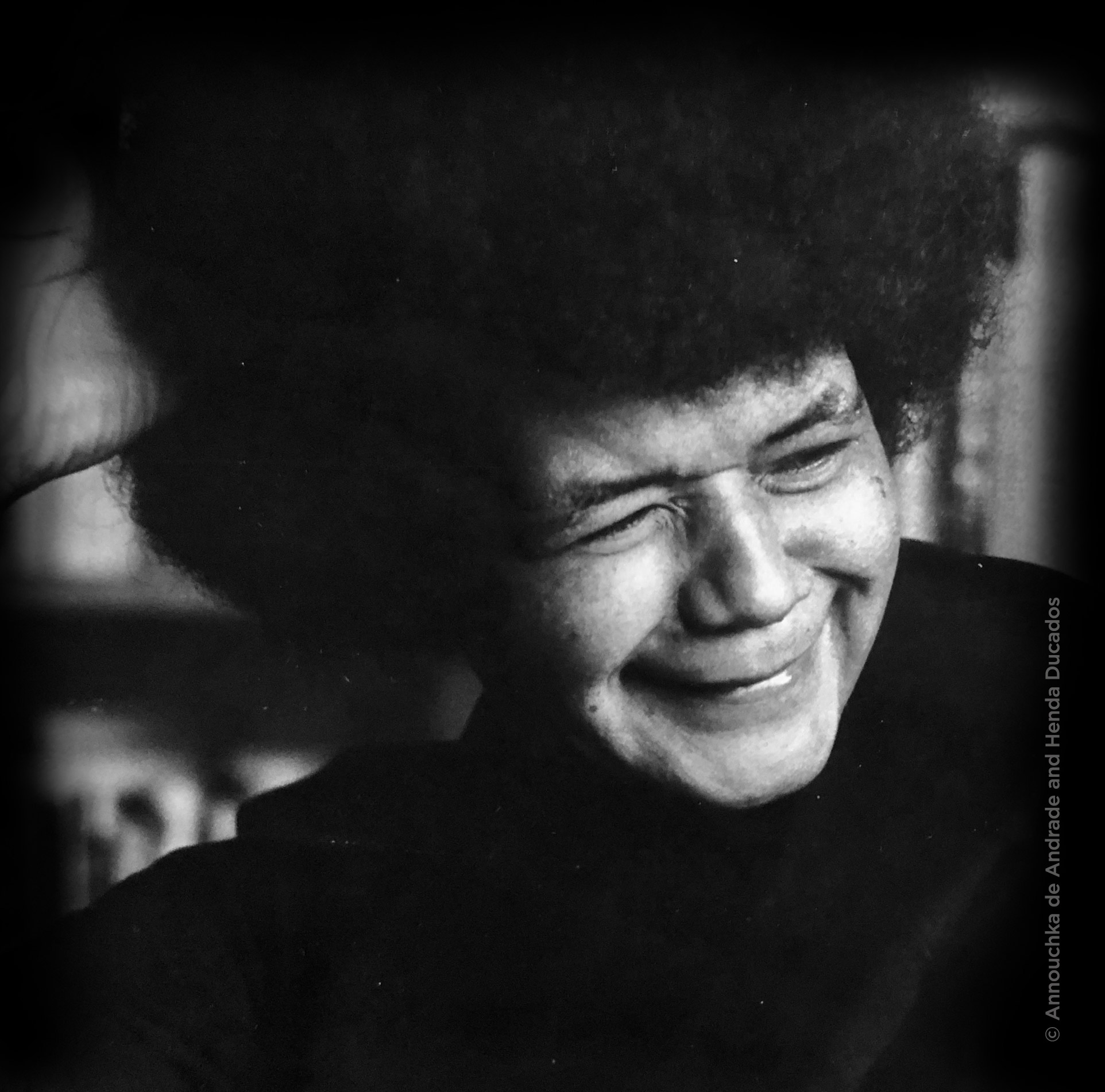
Sarah Maldoror, 1974
Sarah Maldoror
There are unsolved questions, gaps, mysteries, and misunderstandings (willful or not) in Sarah Maldoror’s career and biography that are best summarized by the origin of her name: Maldoror is the title of one of the ‘venomous’ flowers of French culture, The Songs of Maldoror, a book-length descent into hell written by 19th-century-poet Lautréamont. By choosing this name as an alias, Maldoror posited herself within French culture’claiming some of its most sophisticated, albeit slightly elitist aspects while simultaneously embracing its iconoclastic tradition (Lautréamont is hailed as an ancestor to Rimbaud and the Surrealists). In one word, she paid homage to the dilemma of the French-speaking black intellectual: in love with and a part of French culture, yet deeply aware that he/she will never belong to the ‘mainstream.’
Another tantalizing question: where does Maldoror come from?
Even though she made some of her better-known movies in Africa, she was born in France, and is discreet about the nature of her West Indian (Guadeloupean) descent. The point is, like many children of mixed parentage, Maldoror proudly claims her black heritage, and identifies with it. The most puzzling question: why wasn’t Maldoror given the opportunity to direct more feature films after Sambizanga? As it stands now, her filmography is particularly impressive, as she has turned her camera, her incisive and generous gaze, her sense of rhythm and poetry, to a number of subjects, from the history of the Saint Denis Cathedral to African immigration in Paris, from the work of poets, fashion designers, sculptors, and singers (including the legendary Haitian Toto Bissainte, one of the four members of the theater group ‘Les Griots’ she founded in the early 1960s), to adaptation of literary works (such as L’h’pital de Leningrad, from a short story by Victor Serge, or Le passager du Tassili, from a novel by Akli Tadjer).
Yet, after Monangamé’e, Guns for Banta, and mostly Sambizanga, our appetite was whetted, and we were expecting more African revolutionary movies from Sarah Maldoror. Not only because there are still so few women working as directors in the African continent, but because Sambizanga, combining a superb mastery of cinematic language with a unique sensibility, both Pan-African and feminine, expressed a new, powerful voice in world cinema: African women had never been shown with such compassion, understanding, and love, with such a keen attention to detail, body language, and modes of communication. When Maria’s husband is brutally kidnapped by the police, she is immediately surrounded by a group of village women of all ages who cry and
mourn with her, comfort her, eventually pacify her. After a long and exhausting journey in her search for her jailed husband, she arrives at the home of friends, where she is welcomed by a community of women; one of them takes Maria’s baby in her arms and suckles him. bell hooks wrote: [inSambizanga] there are black women imaged, constructed there so differently from what i had seen before, i remember the cries of these black women in their sister bonding . . . their cries haunt me these mourning black women, their grief unmediated, different.?
Yet Maldoror’s life also articulates the essential displacement which defines women in the African diaspora; her own situation is made more complex by her involvement with Mario de Andrade, a complex, charismatic figure who was a writer, artist, and poet as well as a political leader who contributed to the Revolution in Angola. In the early 1960s, they received scholarships to go to Moscow (where she studied with Mark Donsko) and met Ousmane Sembene, the ‘father’ of African cinema), as the Soviet Union sought to play a role in the emerging African countries and train its new elites. At that time, the left-wing intelligentsias in Europe, Latin America, and Africa believed that only the ‘Third World’ could foster world revolution. This was a time of struggle and Utopia.
For some African essentialists, though, Maldoror is still considered a ‘foreigner,’ only redeemed by ‘her long service to the black and African causes and her marriage [sic] to a prominent African nationalist.’ Significantly, the same writer adds that ‘[Sambizanga’s] deliberate feminist slant . . . dilutes the impact of the films concern with armed guerrilla struggle,’ forgetting to mention that Sambizanga is one of Angela Davis’s personal favorites.
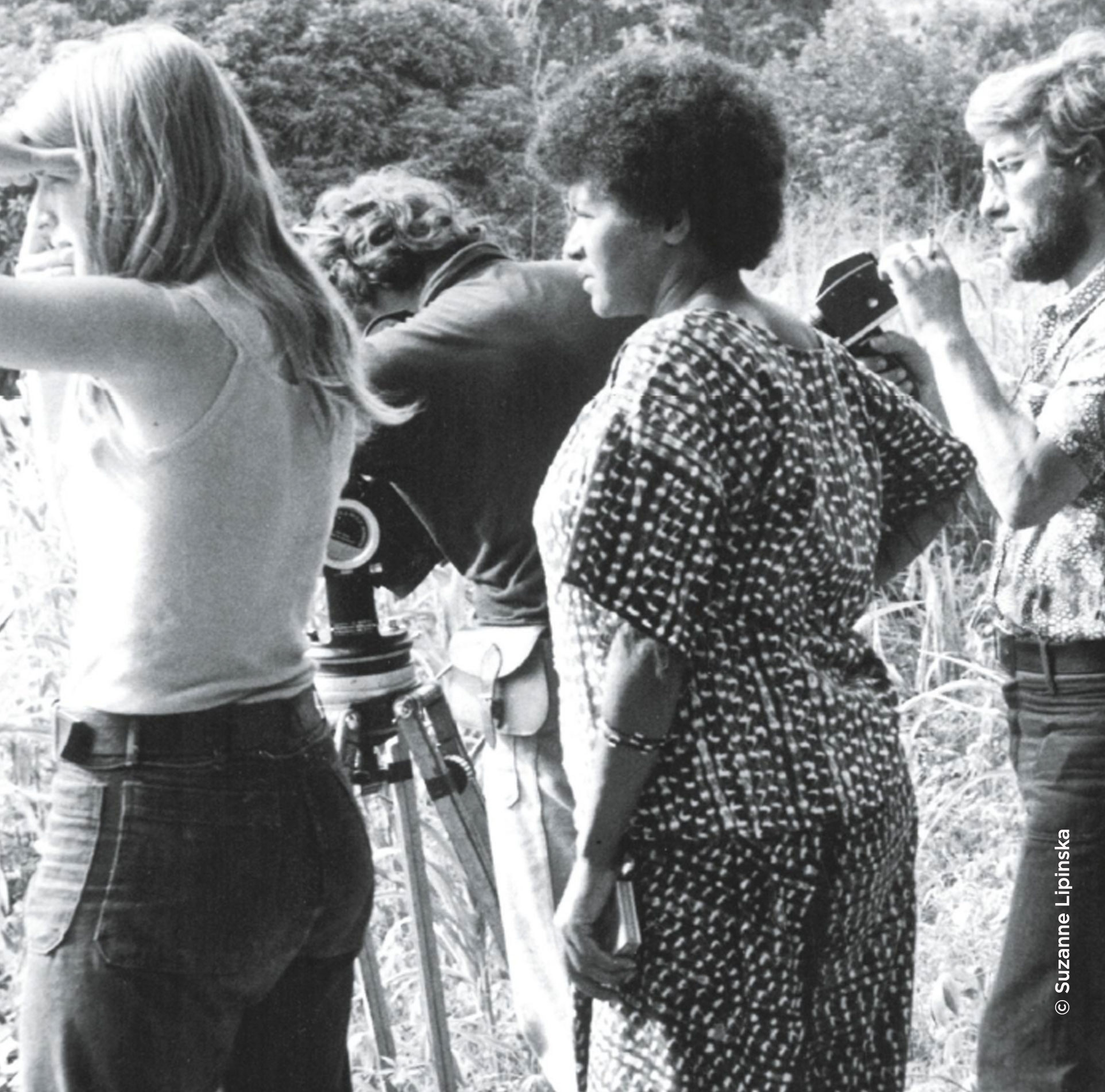
Sarah on set of Sambizanga
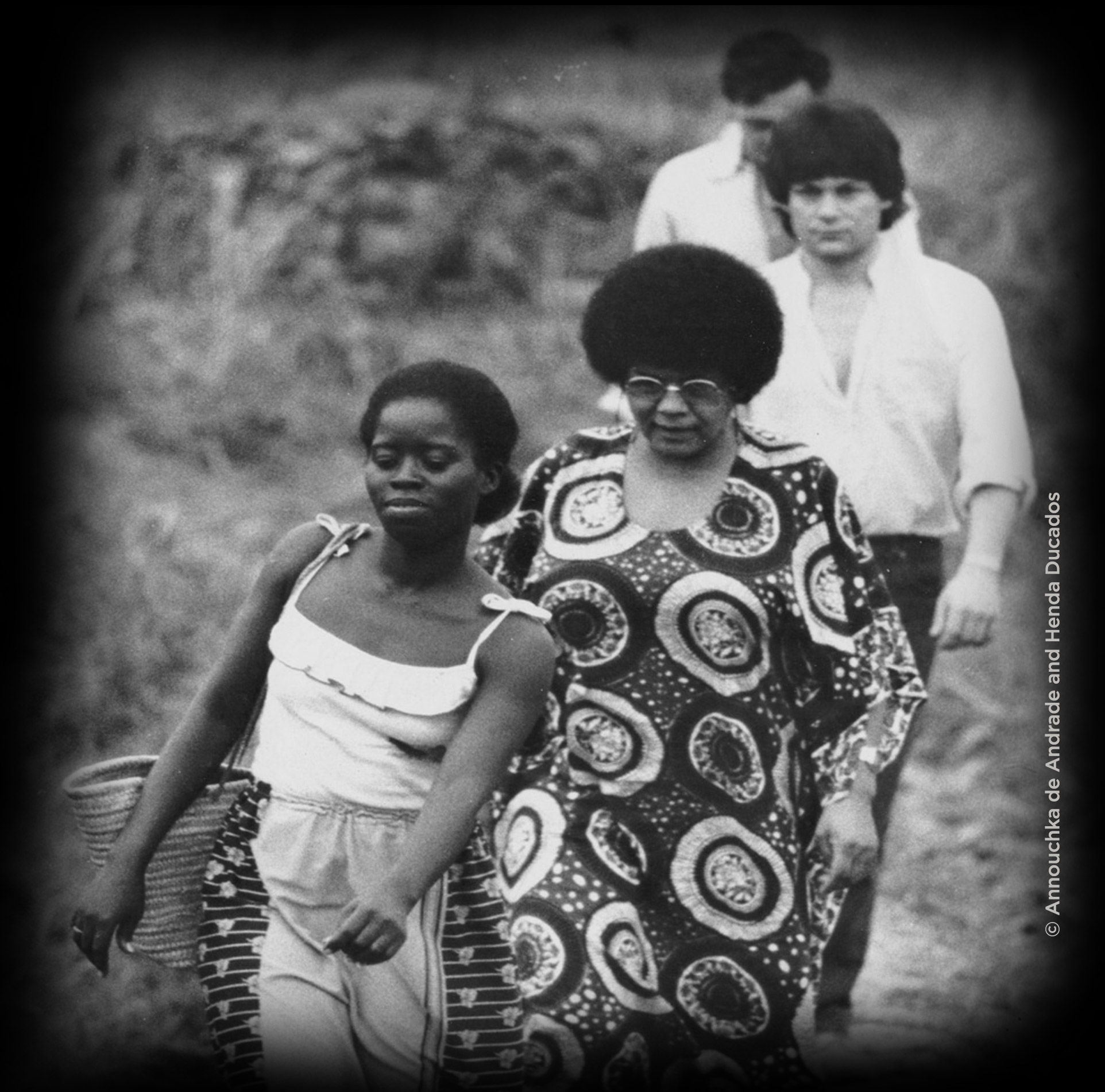
Sarah on the set of A Bissau le-carnaval
When Maldoror came back to live in France and started working for television in the late 1970s, she was faced with another aspect of this cultural dilemma (characterized by the French as m?tissage): as she claims at once French, West Indian, and African cultures, she is considered from neither place (not African enough for some, too black for others), and, as a woman, she has to fight across-the-border prejudices at a professional level.
Moreover, French television is not known for the cultural diversity of its programs, as it postulates an average white t’l’spectateur. It is, therefore, a testimony to Maldoror’s stamina, strength, and determination that, as funding for another feature film keeps eluding her, she has managed to work within a variety of formats (shorts, TV films, featurettes), and, among a series of more or less commissioned works, insert the object of her real desire, the telling, uncovering, and celebration of the stories, myths, traditions, memories of a multifaceted African diaspora. In Martinique, she shotAimé Césaire, Words as Masks, a multi-voiced, sensual, impressionist portrait of the French-speaking poet/playwright/politician who developed the concept of négritude. In Guyana, another documentary, L’on G. Damaswas filmed. In Réunion Maldoror made The Tribe of the ‘E’ Wood. And she is still trying to raise money for Colonel Delgr’s, a feature about a colonel from the West Indies, who loved classical music, fought in Napoleon’s armies, came to believe in the ideas of liberty, equality, fraternity, but found, upon returning to his native island of Guadeloupe, that slavery has been re-established. A man who, like Maldoror, knew the price of treading the narrow line between races and cultures.
BERENICE REYNAUD
Filmography
- 1969: Monangambééé (short).
- 1970: Des Fusils pour Banta (Guns for Banta).
- 1971: Saint-Denis sur Avenir (The Future of Saint Denis)(featurette).
- 1972: Sambizanga.
- 1978: Et les Chien se taisaient (And the Dogs Kept Silent).
- 1979: Un carnaval dans le Sahel (Carnival in sahel) ; Fogo, Ile de Feu; Aimé Césaire, un Homme, une Terre.
- 1980: La Basilique de Saint Denis (short); Un dessert pour Constance (A Dessert for Constance) (fiction for TV).
- 1981: Le Cimetière du Père Lachaise (short); Miro peintre (short); Alberto Carliski, Sculpteur (short).
- 1982: Robert Lapoujade, Peintre (short); Toto Bissainte, Chanteuse (short); René Depestre, Poète (short); L’hôpital de Leningrad(Leningrad Hospital)(fiction for TV).
- 1983: La littérature tunisienne de la Bibliothèque Nationale (Tunisian Literature at the National Library); Un Sénégalais en Normandie (A Senegalese in Normandy) ;Robert Doisneau, Photographe; Le racisme au quotidien (Daily-Life Racism).
- 1985: Le passager du Tassili (The Tassili Passenger) ( fiction for TV).
- 1986: Aimé Césaire, le masque des mots.
- 1988: Emmanuel Ungaro, Couturier (short); Louis Aragon, Un Masque à Paris Vlady, Peintre.
- 1997: L’enfant cinéma.
- 1998: La tribu du bois de le
- 2008: Ana Mercedes Hoyos
- 2009: Eia pour Césaire
Career
1956 founded the black theater company “Les Griots” in which she also worked as director and actor; 1965 assistant to Gillo de Pontercorvo on “The Battle of Algiers”; 1969 directed her first short in Algeria, “Monangambééé”; 1970 directed her first feature in Guinea-Bissau, Guns for Banta.
Awards:
First Prize, Dinard Film Festival, and Best Director Award, Carthage Film Festival, for Monangambee, 1969; Golden Tanis, Carthage Film Festival, and International Catholic Film Office award, Ouagadougou Film Festival, Upper Volta, for Sambizanga, 1972; Label de la Qualité for Vlady-Peintre, 1988;First Prize, Milan Film Festival, and Jury Prize and Critics Prize, Cairo Film Festival, for Léon G. Damas, 1996.
Honor : Médaille du mérite – chevalier. By the ministre of culture Fréderic Mitterrand.
Backround
Born:
Sarah Ducados, in Condom, Gers, France.
Education:
Attended école d’art Dramatique de la rue Blanche, Paris, 1958-60; studied with Mark Donskoi at State Institute of Cinematography, Moscow, (Russia), 1961-62.
Family:
Companion to the poet and founder of the Popular Movement for Angolan Liberation (MPLA) Mario de Andrade (1928-1990), two daughters: Annouchka and Henda.
Cinéma Le Gascogne : Hommage à Sarah Maldoror
Le Gascogne propose ces deux soirées à 20h30, en Hommage à Sarah Maldoror, cinéaste, artiste internationale née à Condom (1929-2020). En partenariat avec Chemins d’Art en Armagnac qui se déroule
Sight and Sound article
IN MEMORIAM – SARAH MALDOROR Though her name remains unfamiliar to most, the Frenchborn filmmaker’s work is central to postcolonial African cinema. By Sukhdev Sandhu It was only in her
Read moreWoman With a Weapon-Camera – The New Inquiry
Woman With a Weapon-Camera On the work of Sarah Maldoror By YASMINA PRICE – AUGUST 27, 2020 SARAH Maldoror was a voice for history. I borrow this phrase from Euzhan Palcy, a
Read moreRest in Power, Sarah Maldoror (1929-2020)
The Screen Worlds team would like to express our most heartfelt gratitude to the pioneering filmmaker Sarah Maldoror, who passed away in Paris this week from Covid-19 complications. Sarah was
Read more
